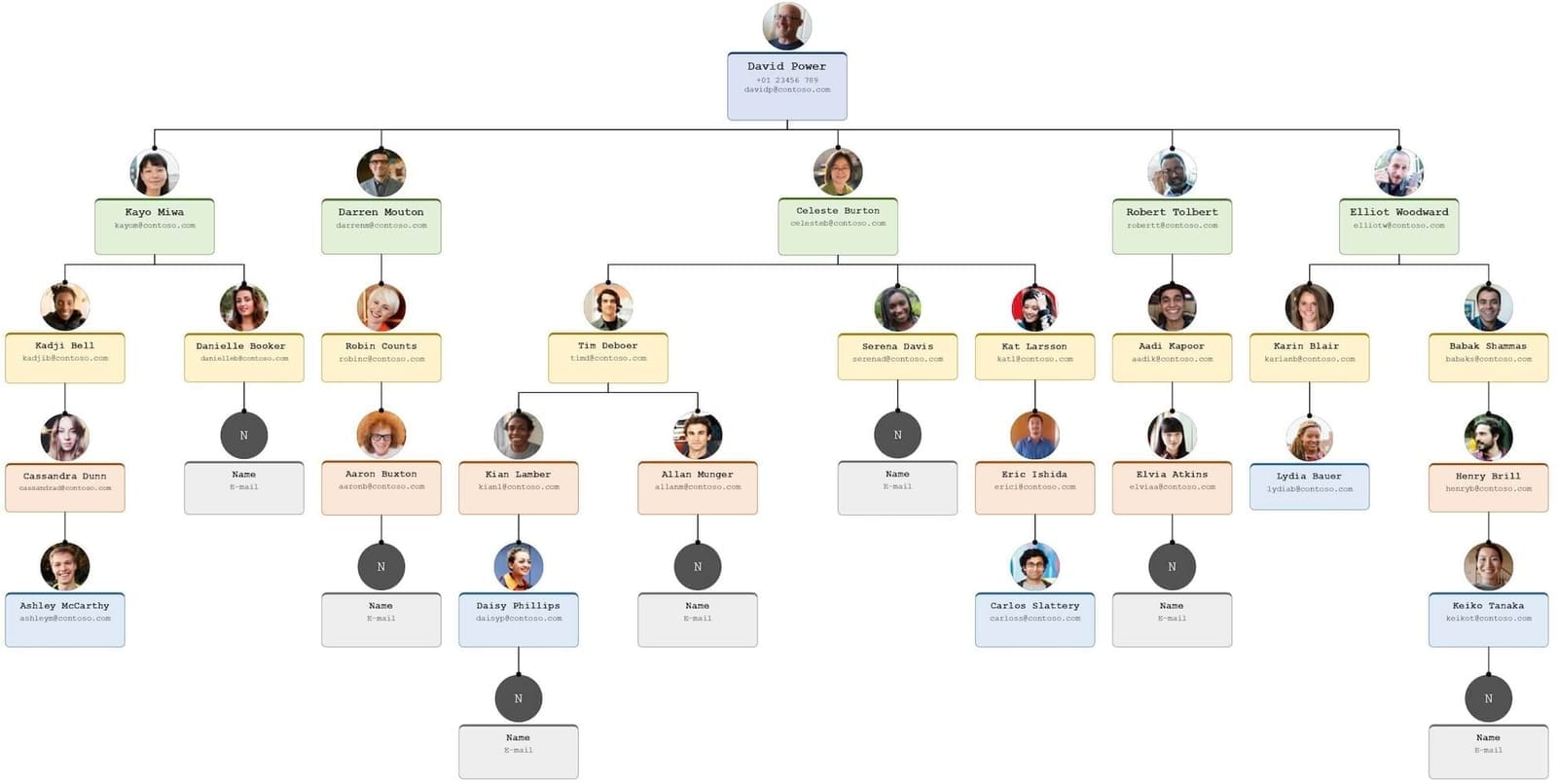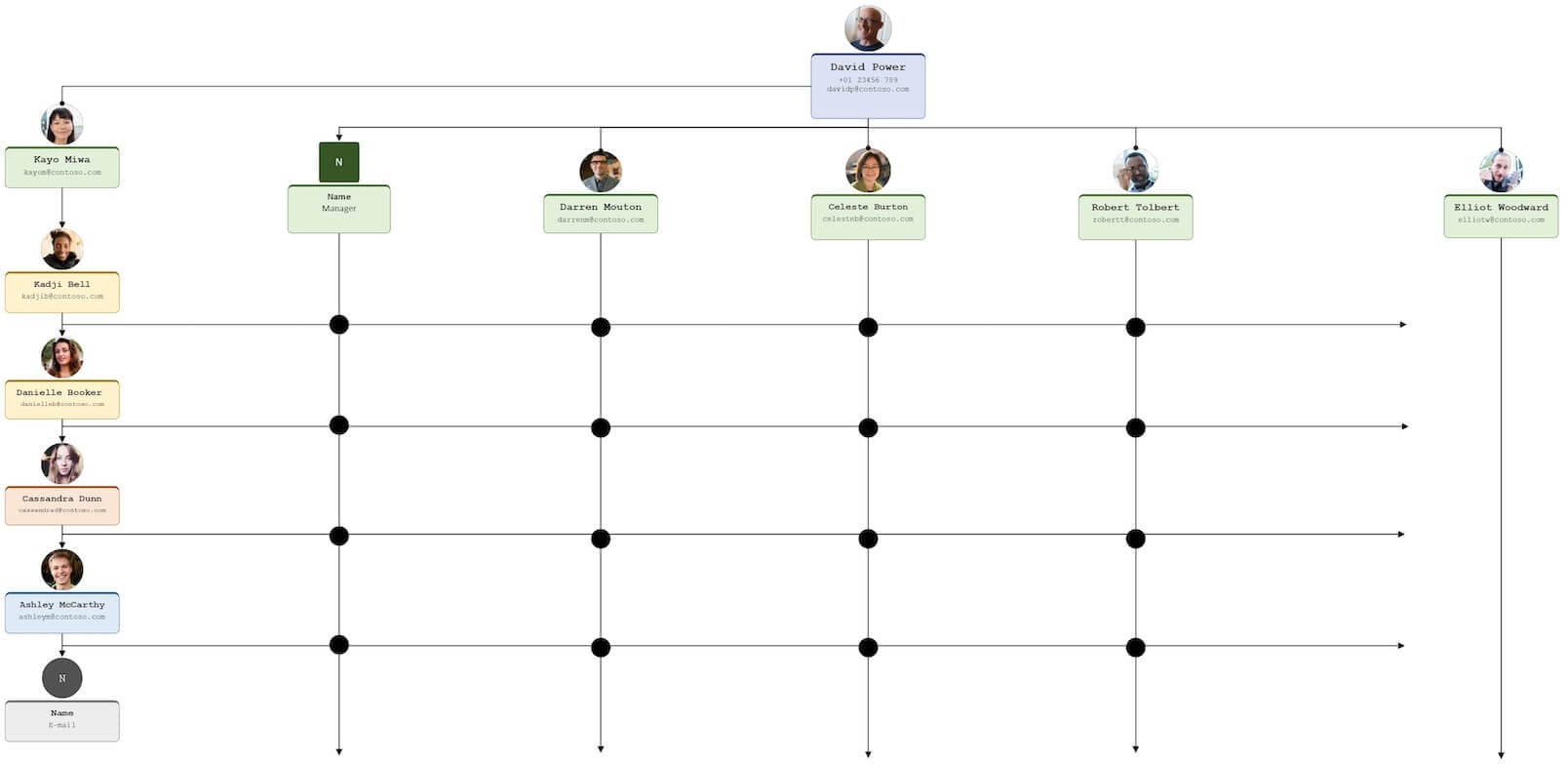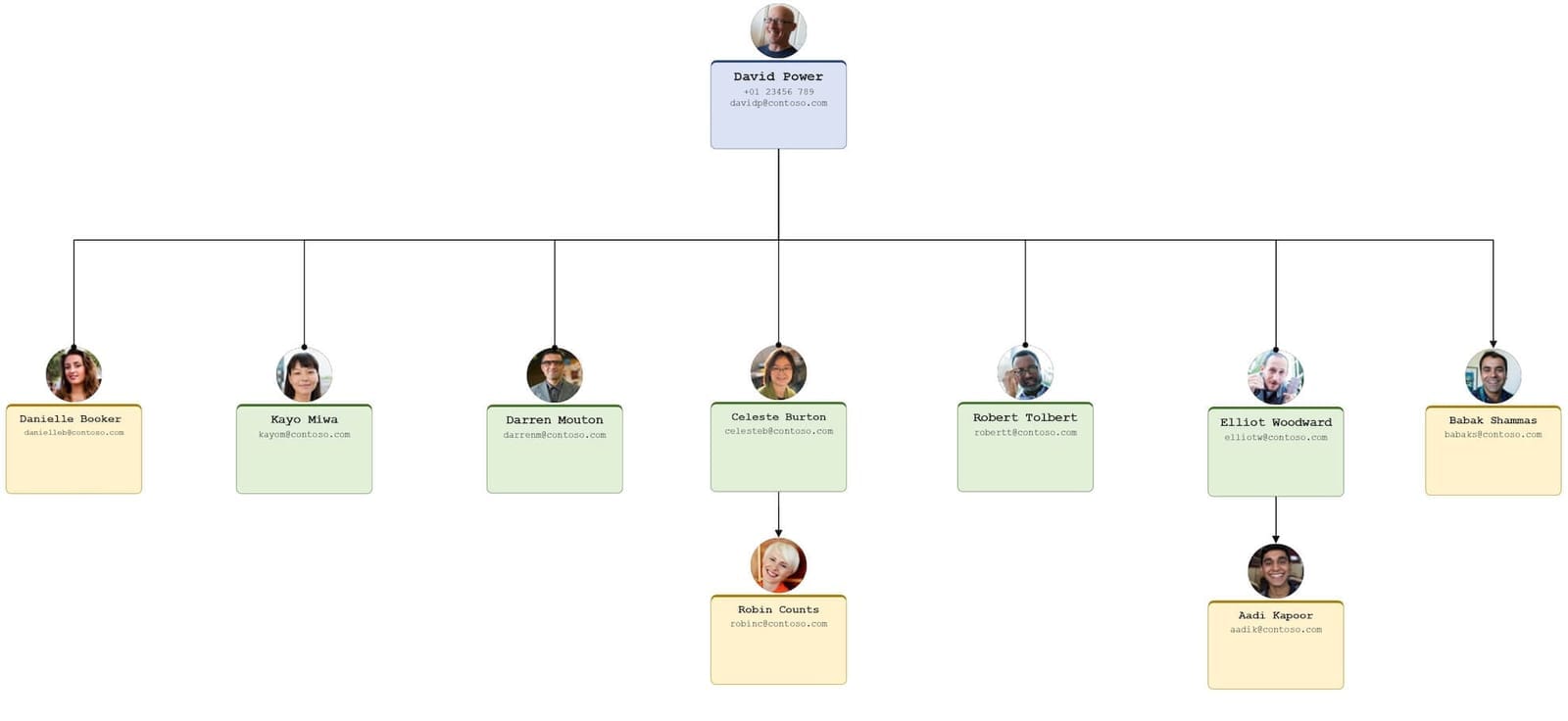The Main Types of Organizational Charts
A comprehensive guide to the types of org charts used by companies and organizations. We cover hierarchical, matrix, flat, and circular structures and when each format works best.

While most org charts have the same purpose, not all of them are structured in the same way. Over the years, business leaders and theorists have developed several formats to best fit certain needs and management styles.
In this comprehensive guide, I’ll walk you through the most common types of org charts and when you might use each style.
The Classic Hierarchical Model Org Chart
The original and still most standard org chart is hierarchical, meaning it’s set up like a pyramid with leadership at the top. This reflects a traditional, bureaucratic management approach with clear divisions between levels of rank and authority.
Hierarchical org charts start with the head of the organization (usually the president or CEO) at the apex of the pyramid. Right below are their direct reports, often senior leadership like the company’s CFO, COO, VP of Operations, etc. Under them are mid-level department heads, who manage teams of lower-level employees.
The defining quality of hierarchical org charts is that authority flows strictly from the top down. Each position reports up the chain of command to the manager directly above them, who then reports up to their boss, and so on. This type of structure emphasizes “sticking to your lane” and managing all decisions through the proper authority level.

When Is A Hierarchical Model Useful?
Hierarchical models thrive in very large companies where highly centralized and standardized management helps maintain control. We’re talking big corporations, global banks, and government agencies; you get the idea. Think McDonald’s - there's no room for freeform creativity when you've got millions of customers visiting thousands of locations worldwide each day.
The military also relies on a rigid hierarchical command for good reason. When life-or-death missions are carried out by thousands of troops, you need to know exactly who is in charge and where the buck stops at each level.
Matrix-Based Org Charts
Unlike strict hierarchies, matrix-based org charts have more flexible chains of command with overlapping workgroups under multiple managers. Rather than siloing employees into departments by function (like marketing, product, engineering, etc), people are shared across interdisciplinary teams focused on specific product lines or initiatives.
For example, a matrix org chart might have a team working on “Product A” with members pulled from engineering, design, legal, marketing, and so on. Those team members still belong to their respective functional groups with individual managers. But for Product A activities, they also report to that dedicated cross-functional leadership chain.

When Are Matrix-Based Org Charts Useful?
Matrix structures are complicated but powerful tools for companies that manage diverse portfolios of products or services. They provide focused oversight for each offering while enabling expertise and resource sharing across the organization. Engineering pros aren’t isolated just working on “engineering stuff” - they flex across different products applying specialized skills where needed most.
Tech firms like Microsoft often utilize a matrix-based structure since they juggle so many product lines under one roof. It also helps startups attack entirely new markets, pulling execs with deep domain expertise from across departments to guide a fledgling innovations path to product-market fit.
Flat or Non-Hierarchical Org Charts
On the opposite end of the spectrum, flat or non-hierarchical org charts completely eschew the traditional management pyramid shape. These structures have minimal to no middle management layers between leadership and employees.
While still listing areas of responsibility, flat org charts arrange boxes side-by-side instead of different levels. This shows how the company views each role or team equally from a rank perspective. Responsibilities and subject matter expertise differ, but no one person or group ranks higher than another.

When Are Flat Org Charts Useful?
Flat organizations are nimble, collaborative, and well-suited for entrepreneurial cultures. Without bureaucratic hierarchies to navigate, they react fast to opportunities. Junior employees also often thrive with direct access and transparency from company leaders rather than being buried under layer upon layer of management.
You see ultra-flat org charts in many technology firms and creative agencies where innovation flows from an autonomous, cross-disciplinary workforce. Valve Corporation, makers of popular video games like Counter-Strike and Half-Life, practices a radical non-hierarchical management style with entirely self-organizing teams.
Circular Org Charts
A newer format, circular org charts set teams, business units, or workers equally around a central leadership core team or CEO to again symbolize non-hierarchical status. Visually, it looks strikingly like a target with leadership at the bullseye and wings of the organization radiating out from there.
The circular format aims to empower employees and foster innovation by removing internal barriers between functions. Marketing doesn’t throw ideas over the fence for Product to handle or Engineering to implement. Everyone operates collaboratively with the leaders at the core binding it together.
When Are Circular Charts Useful?
Ideally suited for mission-driven organizations, circular models help rally staff toward collective goals and build strong cultures. Accountability rests shared across all levels instead of solely at the apex of leadership.
Non-profits often thrive on circular org charts by distributing ownership across equitable cause-focused teams. But even quant-driven corporations like consumer goods giant Procter & Gamble harness aspects of non-hierarchical circles within their matrix layouts.


